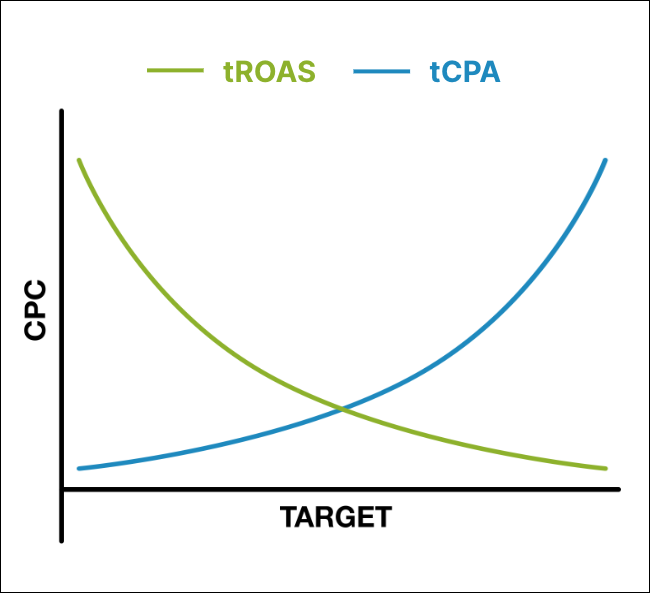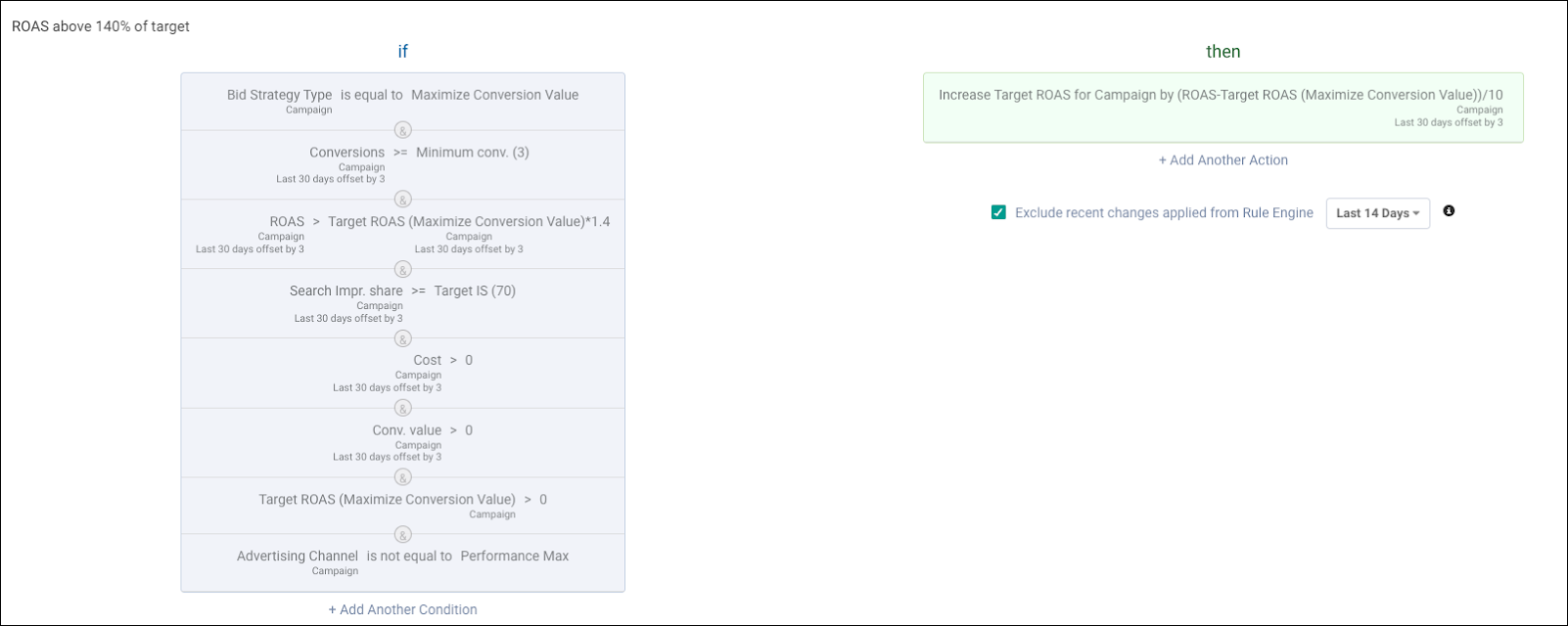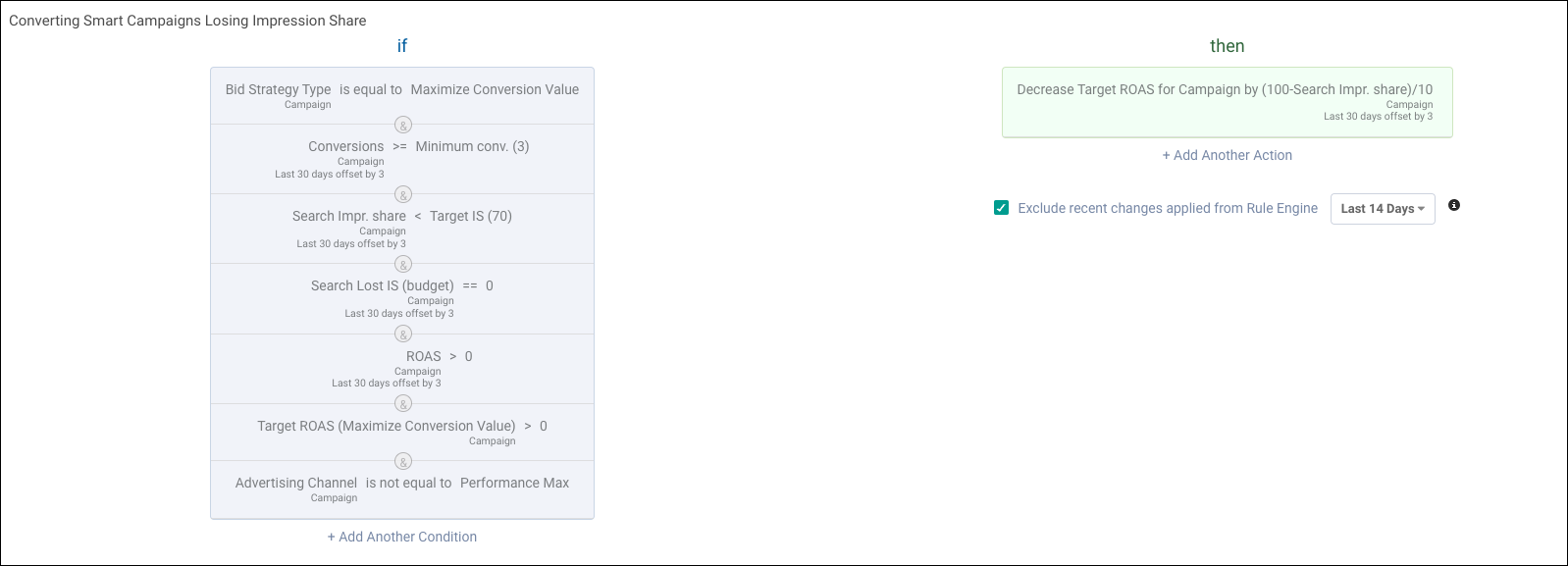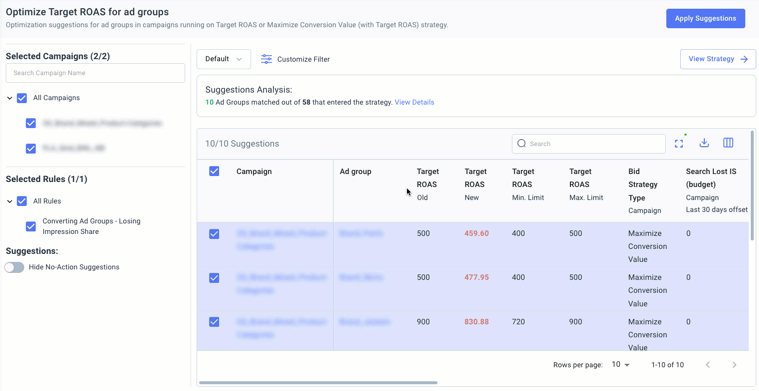Smart bidding strategies have transformed bid management for the better. However, advertisers often grapple with the challenge of gaining greater control over their campaign optimizations. At Optmyzr, we’ve been at the forefront of addressing this concern, and one common question we receive is, “How can I adjust keyword bids when using smart bidding?”
The initial response might appear simple: “You can’t.” But there’s a twist.
Although you can’t directly modify bids for individual keywords, you can strategically signal the algorithms to influence your campaign’s performance and have a significant impact on your bids
How to adjust targets to influence bids?
If you’ve set a Target ROAS or Target CPA in your bidding strategies, you can influence bids through subtle adjustments to said targets at either the campaign or ad group level. These adjustments serve as signals to communicate your intentions to Google’s bidding algorithms.
If your goal is to raise your bids to increase your chances of conquering impression share and push for success in the auction, you can do the following:
- Lower the target ROAS: This action tells the algorithm, “I’m willing to sacrifice a bit of my ROAS into my bids to push for success in the auction."
- Raise the target CPA: This tells the algorithm, “I’m ready to invest more for each conversion."
Now, if you think that most of the available revenue or conversions are already being captured, or that there’s some inefficient spend to remove and you want to decrease bids:
- Raise the target ROAS: This action tells the algorithm, “I want to continue pushing for revenue by lowering my costs”
- Decrease the target CPA: This tells the algorithm, “I want you to find less expensive conversions”
To help illustrate these concepts, the graph below outlines the expected behavior of your CPCs as you adjust each target:

CPC Vs. Bidding
In summary:
- Lowering the Target ROAS leads to higher bids
- Raising the Target ROAS results in lower bids
- A higher Target CPA leads to higher bids
- A lower Target CPA leads to lower bids
How can Optmyzr help you?
Within the Optmyzr toolset for automated bidding, we have four ready-to-use rule-based tools called:
- Optimize Target CPA at the ad group level
- Optimize Target CPA at the campaign level
- Optimize Target ROAS at the ad group level
- Optimize Target ROAS at the campaign level
The primary goal of optimizing your targets is to fine-tune bidding strategies within campaigns or ad groups. This kind of optimization process relies on two key sets of rules:
First: Optimizing high-potential performers

Optimizing High-Potential Performers
The initial set of rules concentrates on identifying ad groups or campaigns with significant potential for improved performance. Specifically, we pinpoint ad groups or campaigns that are actively generating conversions but are losing impression share due to ad rank, and that don’t have any budget constraints.
In such cases, we want to increase our bids. Not arbitrarily but with a clear intention: to recover lost impression share and enhance the visibility of your ads. This can lead to higher click-through rates and increased exposure to potential customers.
Bidding up to regain lost impression share due to a lower ad rank in a converting campaign or ad group is a smart strategic move that can amplify the campaign’s reach, and ultimately, drive more valuable conversions.
Second: Optimizing high-performers

Optimizing High-Performers
In the second set of rules, the focus shifts to ad groups or campaigns that have already surpassed their performance targets. In these cases, we look for opportunities to make our bidding strategies more cost-efficient.
The process here closely resembles the first set of rules, with a key difference. Now, we’re reviewing ad groups or campaigns that have excellent impression share performance and have exceeded their current targets by a substantial margin (e.g. 140% of their targets). These are the ad groups or campaigns for which we may be paying more than necessary.
In this context, the objective is to reduce our bids.
Performance Max: Unique considerations
When it comes to implementing these optimizations for Performance Max campaigns, two important limitations need to be considered:
1. Granular control
In Search and Shopping campaigns, we have the flexibility to influence keyword bids within specific ad groups, which gives us granular control even alongside automation. However, in Performance Max campaigns, you can only make these adjustments at the campaign level.
In cases where you want a little bit more control, you may want to consider structuring your Performance Max campaigns based on performance.
2. Impression share…less
We’ve discussed influencing bid behavior through targets to recover impression share, but it’s important to note that this metric doesn’t exist in Performance Max campaigns. However, you can explore optimizing around “Click Share.” Google defines this metric as the estimated share of all achievable clicks that you’ve received.
Google also suggests that “everything you can do to increase impression share and absolute top impression share is also useful for increasing click share.”
Additional Considerations for Performance Max Optimization:
In certain scenarios, you may want to rethink your strategy and base your decisions on the following variables before adjusting your Target ROAS:
- The proximity of the campaign’s ROAS to your target.
- The historical performance of the campaign (has it experienced a significant loss in impressions, ROAS, Conv. Rate?).
- The campaign’s efficiency and Average CPC when compared to your budget.
You can use tools like our Rule Engine to factor in all of these aspects into one streamlined and automatable optimization.
To close this point, while the approach in this post may not be 100% applicable when we talk about optimizing Performance Max campaigns, we believe that these campaigns are not impossible to optimize, we just have to be a little bit more creative about it and be willing to experiment. In this article by our CEO, Frederick Vallaeys for Search Engine Journal, you’ll find 11 Great Tips for Optimizing Performance Max.
Things to keep in mind
A few common questions and recommendations often arise when it comes to implementing this type of optimization. Let’s address them:
How often should I adjust targets?
Frequently adjusting your targets may not be the best approach. While the ideal frequency depends on your account’s characteristics and strategy, we typically recommend making these adjustments once or twice a month. Keeping a balanced approach allows for smoother performance and ensures that any learning phases triggered will be significantly shorter.
By default, our Optimize Target ROAS and Target CPA tools refrain from suggesting changes to entities you’ve already modified in the last 14 days. You also have the flexibility to adjust this threshold by customizing the tool into your own Rule Engine strategy.

Won’t it reset my campaigns to the learning phase?
To mitigate the risk of your campaigns re-entering the learning phase, we advise against making drastic changes to your targets. In fact, our tools will only suggest small adjustments. So, along with the recommended optimization frequency, you can avoid prolonged learning phases and maintain campaign stability.
Campaign duration before implementation
It’s a good idea to allow your campaigns to accumulate enough data before making adjustments. By default, the tool operates based on the last 30 days of campaign performance data. The more traffic volume and conversions your campaigns generate, the easier it’ll be for the algorithms to recalibrate, and the richer the dataset the tools can use to offer valuable suggestions.
Audience Bidding on Smart Bidding
We have been aware that sometimes, mistakenly, advertisers put audiences on “Observation” and then mix it with this type of strategy, hoping that Google will increase bids for those audiences as well. While we would love to be able to say that it works, this is not the case.
For campaigns that use Smart Bidding, first-party audience segments added under the “Observation” setting will be used as signals for Smart Bidding strategies to help prioritize certain audiences, or, sometimes will simply be ignored by Google.
Customization is key
Remember that you’re not bound to the examples outlined in this post or the default logic of our tools. Customization is the key to tailoring strategies to your account’s unique context and your specific goals.
For instance, if you’re pursuing aggressive competition for top-of-page impressions, instead of optimizing around Search Impression Share, consider focusing on metrics like Search lost top impression share (rank) or Search lost absolute top impression share (rank).
Final thoughts
In the vast universe of accounts and campaigns, each with its unique context, it’s important to remember that there’s no one-size-fits-all strategy set in stone. What we’ve discussed here highlights that the success of automation depends on your input. These strategies serve as examples of how we can transform traditional bid management and optimization approaches into valuable signals that help algorithms perform even better.
For those of you looking to apply this knowledge to optimize and manage campaigns at scale and save time, tools like Optmyzr are ready for you.
If you haven’t joined us yet, we invite you to take a 14-day free trial. Don’t hesitate to get in touch with any questions, feedback, or ideas you may have. Our team is always happy to help you!









